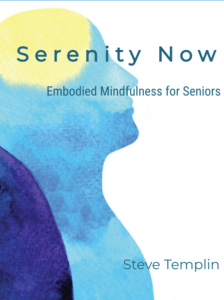I remember a patient from many years ago who was experiencing back pain years after, actually a decade after, she had been injured in an auto accident. I was treating her with acupuncture and a variety of manual therapies but I was only able to provide her with temporary relief.
The problem was that I was treating her back when I should have been treating the neurological pathways that perpetuate remembered pain. Contrary to common belief, after weeks or months, not to mention years or decades, most injured tissue heals and does not generate pain.
If that’s the case, that the tissues are no longer generating pain, then where is our epidemic of chronic pain coming from? Yes, there is an epidemic when you consider that 50 million Americans experience chronic pain, that’s 20% of the population.
Most chronic pain is coming from remembered neural pathways, brain circuitry, that’s fueled by unresolved stressful emotions and trauma. Functional MRI studies have shown that both physical pain and emotional pain can activate the same brain pathways.
That information may help to explain why strategies addressing emotional stress have been successful in resolving chronic pain. Emotionally focused approaches, such as psychotherapy and expressive writing, have been helpful in relieving chronic pain even after a variety of physical treatments and even surgery have failed to provide lasting relief.
In this post we’ll look at how Energy Medicine, especially self-applied Energy Medicine, can be used to relieve emotional burdens and related physical pain.
Emotional Stress Release (ESR)
First of all, Energy Medicine is an umbrella term that covers many unconventional healing modalities. Often, they’ll claim to rely on some invisible healing force or energy for their efficacy.
Things like acupuncture, homeopathy, tapping therapies, crystals, and tuning forks fit into this category. When you tell your friend about a new healing approach your trying and they roll their eyes, you’re probably talking Energy Medicine.
One of the first Energy Medicine techniques that I learned, and one of the simplest and most powerful, is called Emotional Stress Release, or ESR.
I learned ESR when I was studying to become a Touch for Health (TFH) teacher. It consisted of a combination of holding acupuncture points on the forehead, Gall Bladder 14, while remembering a stressful event and experiencing any lingering emotions that accompany the memories.
As I recall, ESR was the first emotionally based technique that I used regularly. And that is what I used to help the patient I mentioned at the start of this post to significantly relieve her chronic back pain. And when the pain would return in varying degrees during more stressful periods of her life she had the intellectual understanding of what was really causing her pain, so she didn’t need to panic, and an effective tool to help herself find relief.
Listening to Your Body Tell Its Stories with ESR
Over the years my appreciation of Energy Medicine and how it helps has evolved. Initially, the idea was that you’re rebalancing some impersonal energy flow to support the resolution of symptoms. And that by itself is a good thing.
Now my sense of the energy, whether we call it Qi, Prana, Holy Spirit, Life Force, or something else, is that it possesses an intelligence that wants to be acknowledged and engaged, just like we want or need to be seen, heard, and valued. It may just be that acknowledging and engaging with the energy gives it permission to intervene on your behalf.
And what’s really fascinating to me about this energy, this energy that’s so subtle as to be virtually undetectable by scientific devices, can actually be felt in the human body. Yep, your body is some kind of quantum energy detector.
Feelings, sensations, vibrations, and things we can feel but have difficulty putting into words are the felt language of the body. Feelings that are often negated, numbed, ignored, minimized, suppressed, or ridiculed are the language by which nature offers us an invitation for authentic guidance and wholeness.
I could write more about this new take on the value of feelings, but let’s do something that’s helpful in a practical way.
The How To of ESR
The process is simple. You can hold these points on yourself or the points can be held by a friend. The points (Gall Bladder 14) are about an inch or a tad more above your eyebrows right in line with the pupils of your eyes.
You can imagine a nickel or even a quarter sized space half way from your eyebrow to your hairline and you’ve got it. Since you’re going to lightly hold these points with a couple of fingers, and since acupuncture points change in size throughout the day, you don’t need to worry about a precise location.
Here I’ll offer some steps involved in the ESR process. Since you’re doing this at home keep the process comfortable. You can choose something to work with that’s mild to moderately uncomfortable, but keep the more intense issues for a time when you have more experience with the process or more support.
* Gently hold these points and keep holding them while you bring an issue to mind. This concern or issue could be something from the past or related to the future. I’ll use the example of an auto accident.
* While holding the points lightly bring to mind the time around the accident as if you were remembering a scene from a movie. There’s the time before, during, and after the accident. While creating and experiencing your inner movie notice whatever is available to you in terms of feelings, sights, and sounds. Remember, do this step as long as it’s okay.
* Sometimes it may help to describe what happened verbally to help the feelings, sights, and sounds to emerge.
* After you’ve played through the scene one time take a nice breath and notice how you are presently. If you’re okay with the process you can repeat your inner movie process again. Only this time as you experience this inner movie be open to noticing what’s happening more intimately in terms of sights, sounds, and feelings.
* When you’ve experienced the scene take another nice breath and notice how you are. If you’re doing okay you can repeat experiencing your scene one last time. And this last time you can be even more available to the sights, sounds, and especially to the feelings, sensations, or vibrations.
* At this point just take a minute or so to rest. If you do notice any changes emotionally or physically just savor the difference as you rest.
This Emotional Stress Release process is one example of how to revisit stressful experiences that are stored in the body and to reduce their traumatic impact.
Traumatic experience can program a protective response by the brain and nervous system that can long outlive its usefulness. On the other hand, revisiting the experience from a safe vantage point reduces the perception of threat and the body’s maladaptive response, like chronic pain.
The Storytelling Aspects ESR
A bit of a refinement and deepening of this process occurs when we pay attention to our feelings more curiously. Curious attention to what we feel, as opposed to just wanting the feelings to go away, invites the body’s wisdom to reveal more of what it’s been holding in storage.
It’s as if the body has been waiting for a time when it’s safe to let go of the emotional burdens that can ultimately perpetuate pain and suffering, whether emotional or physical.
As we curiously notice feelings that emerge in the ESR process we can also allow ourselves to be open to a flow of experience that may involve imagery, sounds, memories, and other sensation or vibrations that we can’t put into words. This is how we let our body tell its stories.
At times the body may express itself with spontaneous movements, changes in breathing patterns, or vocalizations. With experience we learn that this is a natural way the body releases stored stressful emotions or shock and trauma.
Two Dead Squirrels, or So I Thought
Here’s a final thought or two.
Peter Levine is a renowned trauma therapist who’s written about how animals naturally avoid the traumatic storage of emotional energy by shaking and vibrating after a frightening episode. He notes that while humans have the potential for shaking and vibrating it doesn’t often happen spontaneously. In some ways we may be conditioned to inhibit such a spontaneous release of energy.
I’ve seen video of a polar bear who had been shot with a tranquilizing dart and while asleep was tagged with a tracking device. As the animal eventually returned to consciousness it began to tremor and shake. And then it ran off as if nothing had happened.
So here’s the squirrel story. I was standing in my driveway under a big oak tree when I heard a splat behind me. I turned around and saw a baby squirrel lying perfectly still after what must have been a 30 foot fall. Dead I thought. Within seconds the little body began to shudder and then sprang to its feet and quickly ran away. Okay, that happened.
I barely had time to draw on my Peter Levine memory when ‘splat’. Here was another inert baby squirrel right in front of me. Possibly dead, I thought. And almost immediately he or she convulsed a bit, jumped to its feet and scurried away in the same direction as its sibling.
If we were only more like squirrels or polar bears.


 Steve is a retired Doctor of Oriental Medicine, Acupuncture Physician, and HeartMath Trauma-Sensitive Certified Practitioner with over 35 years of clinical experience in the fields of Energy Medicine, Energy Psychology, and Biofeedback.
Steve is a retired Doctor of Oriental Medicine, Acupuncture Physician, and HeartMath Trauma-Sensitive Certified Practitioner with over 35 years of clinical experience in the fields of Energy Medicine, Energy Psychology, and Biofeedback. 